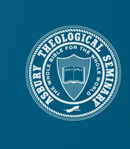Abstract
The history of Christianity long has recognized the transatlantic revival connections in both the First and Second Awakenings, with preaching being noted as the primary means of communicating the revival message. During the past century, transpacific revivalism has become a significant part of the world history of Christianity. In Korean Protestantism, revivalism has been rooted within the majority religious experience, with hymns and gospel songs as an important medium. "While North American denominations have used separate hymnals and have tended to exclude revival hymns from their selections, Korean Protestants have used the same hymnal from the beginning and have retained those hymns that are more expressive of revivalism, especially those from the Holiness movement. Martial hymns that convey the spiritual warfare of Christians in Korea were criticized by Yun Chiho as being meaningless to Korean culture, which he portrayed as connected to the "pen" and not the "sword." However, the martial hymns, such as "Up, and fight against the devil," have been included in all subsequent editions of the Union Hymnal, and they remain an important source of revival piety. From the earliest efforts to select and translate hymns, through music education for Korean congregations, and on to the final process of editing and publishing a Union Hymnal, the Korea missionaries have placed a premium on congregational singing. In conclusion, although much of holiness hymnody in Korea was taken from the "margins" of the Salvation Army and the Oriental 'Missionary Society, a closer look at transpacific revivalism will reveal that it was led by missionaries from "mainline" denominations in North America, was enhanced further by visiting evangelists such as H. C. Morrison, G. W. Ridout, and R. A. Torrey, and was contextualized finally by Korean Protestants in the recent publication of the New Hymnal 2007.
DOI
10.7252/Journal.01.2011F.03
Recommended Citation
Purinton, William T.
(2011)
"United We Sing: Union Hymnals, Holiness Hymnody, and the Formation of Korean Revivalism (1905-2007),"
The Asbury Journal:
Vol. 66:
No.
2, p. 36-56.
Available at:
https://place.asburyseminary.edu/asburyjournal/vol66/iss2/4
Included in
Missions and World Christianity Commons, Religious Thought, Theology and Philosophy of Religion Commons

